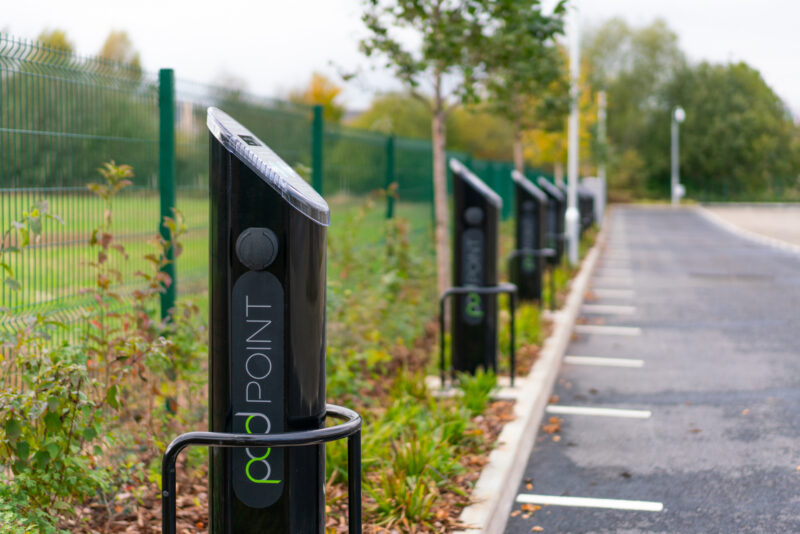The “Road to Zero” Strategy and what it means for businesses
An overview of “The Road to Zero” strategy, government policy towards electric vehicles, and what it means for businesses.
Last updated: Jul 26, 2024 • 4 min read

Summary
The “Road to Zero” strategy outlines the government’s long-term transition to zero emission road transport. As well as identifying aims and intentions, the document explores the tools at the government’s disposal including:
- Grants and subsidies
- Fiscal incentives
- Regulation and legislation of vehicles and infrastructure
- Planning reform
What is the ‘Road to Zero’?
The ‘Road to Zero’ is a document that outlines the government’s long-term strategy to transition to zero emission road transport (“effectively” by 2040), while reducing emissions during the transition.
It is clear that the UK government is interested in both reducing greenhouse gas emissions and positioning the UK economy to take advantage of the commercial opportunities that the energy transition will bring.
To encourage uptake of the cleanest vehicles, the government has confirmed that it will use a combination of:
- Targeted grants and subsidies for the purchase of zero emission vehicles, as well as research and development in the field.
- Fiscal incentives, both preferential taxation for the least emitting vehicles and enforcement of more punitive measures for higher emission vehicles.
- Quotas for zero emission vehicle purchasing for local and central government fleets.
To encourage the development of a fit for purpose charging infrastructure, the government will use a combination of:
- Targeted grants and subsidies for the installation of charging infrastructure, as well as research and development in the field. Including reserving the right to make significant further investments in areas of market failure.
- Fiscal incentives for those seeking to offer chargepoints.
- Reform of the planning system to include charging points in new developments, wherever appropriate.
- Enforcing the provision of “smart” chargepoints to mitigate potential grid impacts from mass adoption of electric cars.
What does this road look like, and how will it affect businesses?
While the government’s Road to Zero strategy is generally high-level and long term in its focus, it does reference a number of policies that are directly relevant to businesses more immediately.
We recommend that all businesses are aware of the following existing policies:
- Zero-rated “Benefit in Kind” (BiK) tax on electricity provided to employees at work.
- Preferential company car BiK rates offer considerable savings on low and zero emission plug-in vehicles over equivalent petrol and diesel cars.
- Workplace Charging Scheme offers up to £350 per socket off the installation of charging points, up to 40 sockets per business.
- Plug-in Vehicle Grants offer discounts off the list price of zero emission motorcycles and vans. For zero emission cars to be eligible, the order must be placed by dealers and logged on the system by 31st March 2023.
- Electric Vehicle Chargepoint grant allows employees to claim up to £350 off the installation of a chargepoint at their home.
Tip: There are additional grants available in Scotland for home and workplace chargepoints. These grants are administered by the Energy Saving Trust Scotland.
Other policies that may prove relevant in the near term:
- £400m fund for the provision of charging infrastructure. This may result in some relevant offers for certain businesses.
- Zero emission vehicle fleet mandates for public sector fleets.
Challenges for the government’s "Road to Zero" strategy
Lack of control over delivery
The government is not directly in control of the development of the technology that will enable us all to drive zero emission cars.
Progress in electrification is moving at a pace which makes it likely that we will get there ahead of the government’s 2040 ambitions.
Technology risks
Like all bodies making investments in the electrification of transport, there is a danger that these investments are undermined by a disruptive move to a new technology.
To this end the government is looking to be “technology agnostic”, but there is no mistaking their momentum towards support for electric vehicles.
Identifying correct public investment opportunities
The government has reserved the opportunity to intervene to “correct market failures”. If they do this correctly they can speed the uptake of electric vehicles and the formation of an effective electric vehicle related market.
If they intervene incorrectly they could:
- Get poor value for money for the taxpayer.
- Undermine the investability of the market.
- Inhibit the development of innovative products, services and business models.
Accounting for the loss in fuel duty
In the longer run, the government will lose a lot of tax revenue as fuel duty (the tax on petrol and diesel) receipts also trend to zero.
Rather than put an equivalent “fuel” duty on electricity, it is likely the government may look to transition to per mile road taxation, or “road pricing”. However, this remains to be confirmed.
